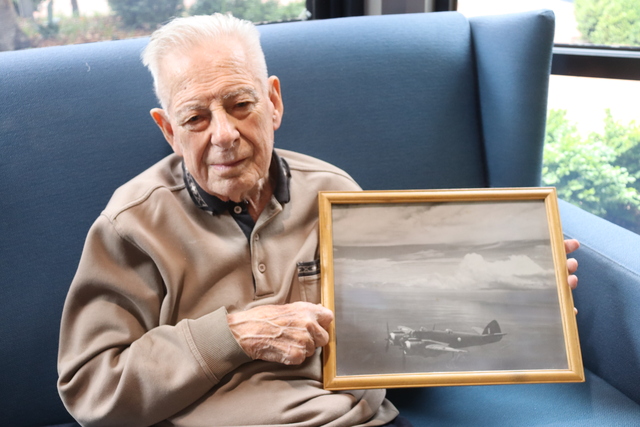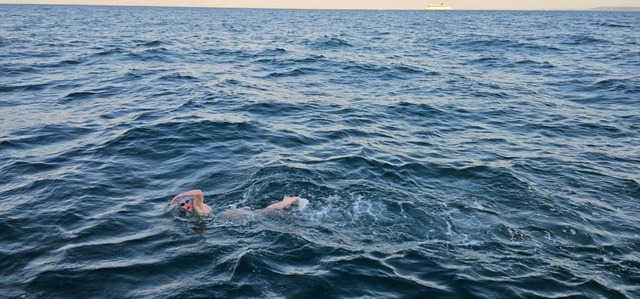1938 – 2014
A GOLDEN whistler seen at a railway station when he was a schoolboy first drew Ken Simpson’s attention to the beauty of Australian birds.
He was already an enthusiastic student of the natural world, but that golden bird set him on a journey which would eventually lead to eight editions of the well-known Simpson and Day ‘Field Guide to the Birds of Australia’, and a lifetime of travelling, lecturing and writing about birds and their habitats.
Ken was educated at University High School, the University of Melbourne and the ANU Canberra. He worked for a variety of institutions including the Austin Hospital, the School of Geology, University of Melbourne, and CSIRO Division of Wildlife Research.
In 1965-66, Ken was part of a CSIRO scientific expedition to Macquarie Island, where he grew very fond of the wekas, brown flightless birds that have a feisty and inquisitive personality. He once built a short flight of steps to the door of a hut, using a mixture which included stale flour. The steps were promptly eaten by the wekas. Ken’s official duties included the study and photography of royal penguins and the four species of albatross at the island. His interest in seabirds later led to the 1972 publication of his first book ‘Birds in Bass Strait’, which contained glimpses of his well-known sense of humour dotted among the factual descriptions. In his final years, he returned again to seabirds, making contact with wildlife carers all along the south coast as he collected records of crested penguins, rare visitors to Australian waters.
From 1967-70, the National Museum of Victoria employed Ken as a Field Officer engaged in Aboriginal archaeology, vertebrate fossil excavation and wildlife surveys along the Murray River between Robinvale and Renmark (in the area of the proposed but never built Chowilla Dam). In 1970, Ken moved to Monash University Zoology Department, working on vertebrate fossil material (mostly fish and marsupials) in south-east Australia. In 1974, Monash awarded him an honorary Master of Science, based on his publications and public lecturing. His final position before retirement in 1992 was as lecturer in geology, ecology and practical environmental science to primary teachers at Deakin University.
Teaching people about natural history was Ken’s passion. In one year, he gave 30 talks to bird lovers, conservation groups, Country Women’s Association, Rotary, Scouts, Parks technical staff, and “anyone who would listen”.
He had joined RAOU (now Birdlife Australia) in 1958, the Royal Society of Victoria in 1967, and supported many other regional bird and field naturalist groups. Over the years he published hundreds of short wildlife observations, describing his life’s work as “research and reporting of natural history, especially palaeontology and ornithology”. For 12 years he served on a Victorian Evaluation Panel of the Australian Heritage Commission. In 1996 he was awarded the Australian Natural History Medallion “for furthering interest and knowledge in Australian Natural History”.
Ken moved to the Yarra Valley in the early ’90s, an area already familiar to him through excursions of the Bird Observers Club, which he had joined in 1951, at the age of 13. In the 1960s, Ken worked with the Swift Survey, spending many hours counting the swifts that flew over the Don Gap, and in later years he never failed to search the sky for the storm clouds which might herald their arrival.
An enthusiast like Ken never really retired. In 1998 he co-authored with Zoe Wilson a book intended for beginners, ‘Birdwatching in Australia and New Zealand’. He continually revised his Field Guide in the light of new research and the final (eighth) edition was published in 2010. He was a strong supporter of the Yarra Junction Library and could often be found there, surrounded by papers and books, but always willing to chat about the local birdlife. He continued to lead bird walks along the Warburton Trail and around the Yarra Valley until his health failed him.
He passed away on 9 July 2014, survived by his brother Peter, his four daughters Catherine, Joanne, Helen and Elizabeth, and his long-time partner, Zoe.
Authority on Oz birds
Digital Editions
-

A veteran’s tale of 100 years
Purchase this photo from Pic Store: 476072 In 100 years of life, Eddie Ham has travelled from country Victoria to fighting from the air in…





